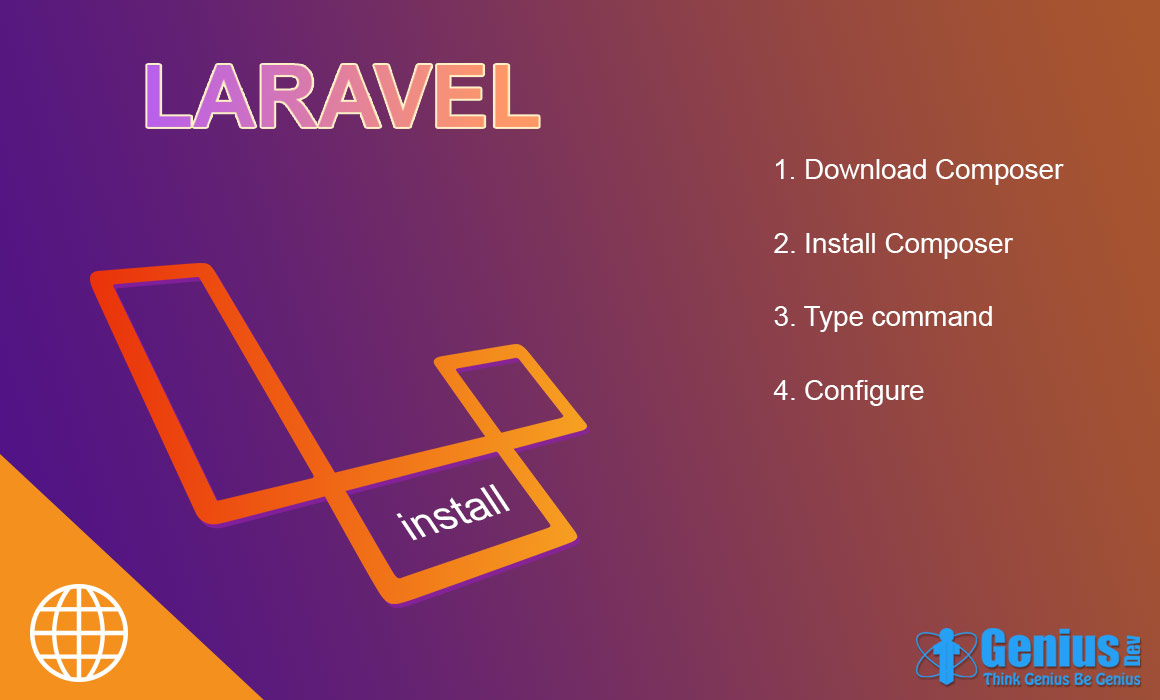 Blog-Web
Blog-Web

Laravel is free and open source framework for developement of web application with more secure algorithms. Some of features are dependency.It is world most recently favourite framework. The response time is less compare to the all other framework. The laravel provides features like :
First we needs to remove dependency. So, we needs to install composer.Laravel utilizes Composer to manage its dependencies. First, download a copy of the composer.phar. Once you have the PHAR archive, you can either keep it in your local project directory or move c:/user/local/bin to use it globally on your system. On Windows, you can use the Composer Windows installer.
Laravel install with help of composer:
First, download the Laravel installer using Composer.
composer global require "laravel/installer=~1.1"
Make sure to place the ~/.composer/vendor/bin directory in your PATH so the laravel executable is found when you run the laravel command in your terminal. You can update composerusing other commands. Updatation of composer is needed. If you want added any packages then also update is required
Once installed, the simple laravel new command will create a fresh Laravel installation in the directory you specify of folder name composer. For instance, laravel new blog would create a directory named blogcontaining a fresh Laravel installation with all dependencies installed. This method of installation is much faster than installing via Composer. Composer is used other framework also required.
You may also install Laravel by issuing the Composer create-project command in your terminal:
composer create-project laravel/laravel {directory} 4.2 --prefer-dist
Once Composer is installed, download the 4.2 version of the Laravel framework and extract its contents into a directory on your server. Next, in the root of your Laravel application, run thephp composer.phar install (or composer install) command to install all of the framework's dependencies. This process requires Git to be installed on the server to successfully complete the installation.
If you want to update the Laravel framework, you may issue the php composer.phar updatecommand.
The Laravel framework has a few system requirements:
As of PHP 5.5, some OS distributions may require you to manually install the PHP JSON extension. When using Ubuntu, this can be done via apt-get install php5-json.
The first thing you should do after installing Laravel is set your application key to a random string. If you installed Laravel via Composer, this key has probably already been set for you by thekey:generate command. Typically, this string should be 32 characters long. The key can be set in theapp.php configuration file. If the application key is not set, your user sessions and other encrypted data will not be secure.
Laravel needs almost no other configuration out of the box. You are free to get started developing! However, you may wish to review the app/config/app.php file and its documentation. It contains several options such as timezone and locale that you may wish to change according to your application.
Once Laravel is installed, you should also configure your local environment. This will allow you to receive detailed error messages when developing on your local machine. By default, detailed error reporting is disabled in your production configuration file.
Laravel may require one set of permissions to be configured: folders within app/storage require write access by the web server.
Paths
Several of the framework directory paths are configurable. To change the location of these directories, check out the bootstrap /paths.php file.
After doing all the step, we get visit our site as get below output:
